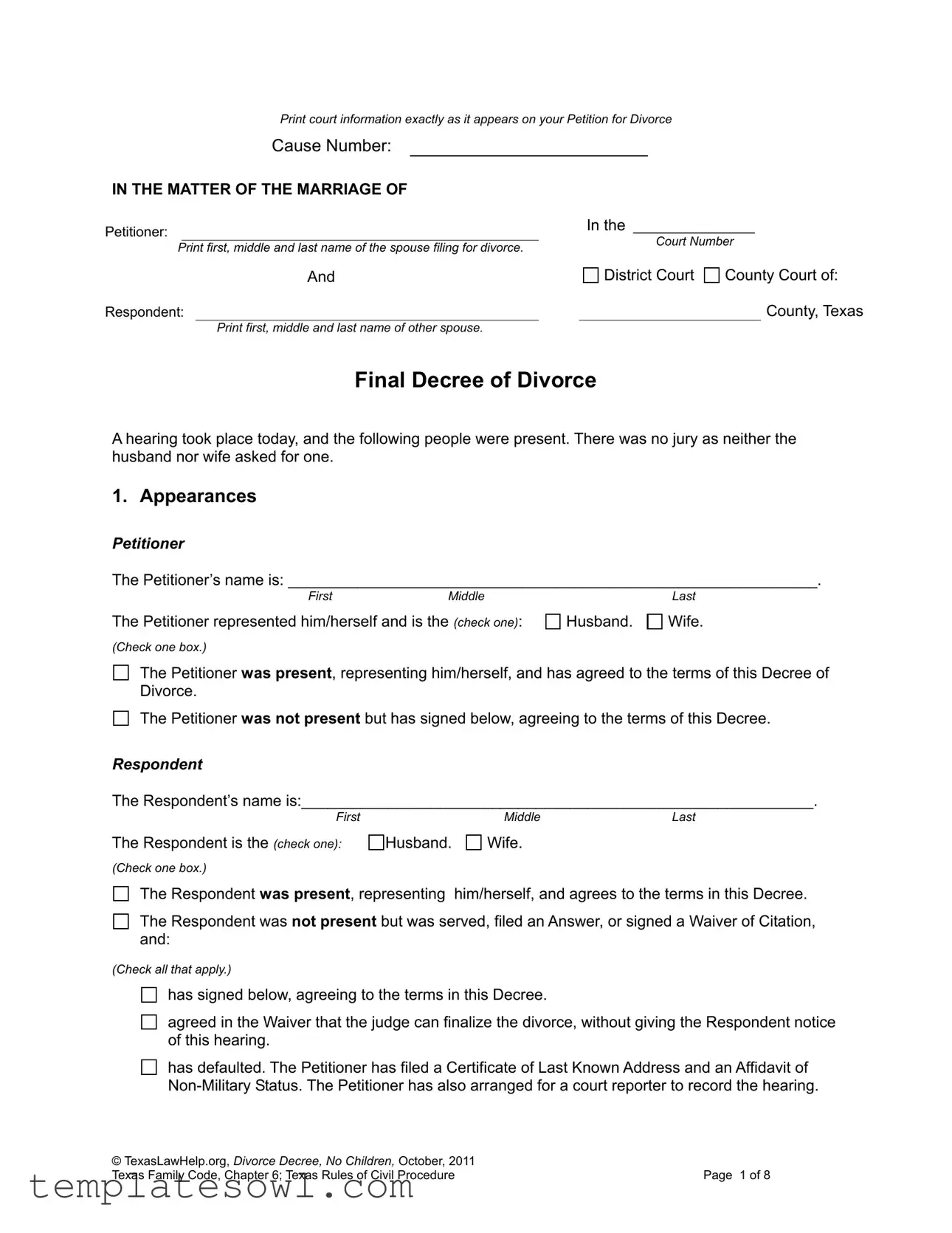What is a Divorce Decree form?
A Divorce Decree is a legal document issued by a court that finalizes the divorce process. It outlines the terms agreed upon by both parties regarding various aspects such as property division, debts, and, when applicable, child custody and support. This document serves as the official record of the divorce and is important for future legal reference.
How do I fill out the Divorce Decree form?
The Divorce Decree form requires specific information about both the Petitioner and Respondent. Begin by entering the court information exactly as it appears on the initial Petition for Divorce. Fill in the names of both parties, indicating who is the Petitioner and who is the Respondent. Make sure all fields are completed accurately as this will impact the validity of the decree. Lastly, follow the prompts to select the applicable options based on your specific circumstances.
What if we do not have children?
If there are no minor children or adult disabled children entitled to support, you will select the option indicating this on the form. This simplifies the process since custody and child support are not factors in your divorce proceedings. The court will still ensure that both parties understand their rights and responsibilities regarding the division of property and debts.
What if one spouse cannot attend the hearing?
If one spouse is unable to attend the hearing, he or she still has options. The absent party must have either signed a waiver or been served with the necessary documents and filed a response. If the absent spouse agrees to the terms, their signature may need to be provided on the Divorce Decree. Ensure that all legal notices are correctly filed to avoid future complications.
What are the residency requirements for filing a divorce in Texas?
The Texas court must confirm that it has the jurisdiction to hear your case. This typically involves ensuring that at least one spouse has been a resident of Texas for at least six months immediately before filing for divorce. Furthermore, the spouse must file for divorce in the county where they have lived for the preceding 90 days. Adhering to these residency requirements is critical for the court to have authority over the divorce proceedings.
Can the Divorce Decree be modified after it is finalized?
While the Divorce Decree is generally considered final, some elements can be modified over time, particularly regarding child support, custody arrangements, and visitation rights. However, to modify any part of the decree, a formal request must be made to the court. It is advisable to document any changes and seek legal counsel if significant changes in circumstances arise.
Is legal representation necessary when completing the Divorce Decree form?
While it is not mandatory to have a lawyer to fill out the Divorce Decree form, seeking legal advice can be beneficial. A professional can provide guidance on property division, ensure compliance with Texas divorce laws, and help avoid potential pitfalls. If the spouses have complex assets, debts, or conflicts, consulting a lawyer may provide additional protection and clarity.













 Any insurance policy that covers the Wife’s life.
Any insurance policy that covers the Wife’s life.
 The Wife’s cars, trucks, motorcycles or other vehicles listed below:
The Wife’s cars, trucks, motorcycles or other vehicles listed below: